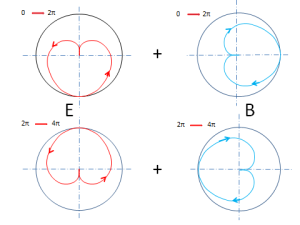Without gravity, we are lost in space.
Regular science indicates gravity as a weak force. The fundamentals are not yet understood. It is assumed to be a manifestation of mass, as is inertia.
The Dutch Paradigm postulates that only the photon and neutrino are fundamental particles. All other fundamental particles are either neutrinos and photons at different levels of system frequency of the electromagnetic system or a construct like an electron.
The Standard Model of Fundamental Particles and Interactions highlights mass as a distinctive property to identify additional fundamental particles, like tau and muon neutrinos and other types of electrons. The property of mass at the subatomic level is in its energy-equivalent.
The Standard Model also has quarks as an elementary particle, with mass.
Although fundamentals of mass are unknown, it is a major identifying property for elementary particles as in the Standard Model.
The Dutch Paradigm only recognizes neutrinos and photons as elementary point particles or entities. These entities, together with the constructs electron and the twin dodecahedrons have electromagnetic manifestations only. Nevertheless, there is “mass”-like behavior.
Therefore, that “mass”-like behavior needs clarification, to start with gravity.
Gravity is the transfer of free electric energy into free monopolar magnetic energy.
Monopolar magnetic manifestation originates from the rotational electromagnetic manifestation of the neutrino.

Bipolarity is impossible, due to the spatial extension of the magnetic manifestation. The manifestation can pass the central point zero but continues in the same polarity. It can only change the chirality, not the polarity. Therefore, each construct that has a mass manifestation has incorporated one or more neutrinos in its construct.
Whenever a construct like an electron and the twin dodecahedrons forms, it induces a modification of the speed of the constituents. When twelve electrons form a single dodecahedron, they change from a relativistic speed to zero. A separate section deals with the issues of inertia in those electrons as a consequence of forming a construct at speed zero.
The build-up of inertia triggers the transfer of free electric energy to free monopolar magnetic energy under reduction of the frequency of the system under construction. There is no external transfer of energy of the constituent entities. Therefore the monopolar magnetic attraction is inevitable as the outcome of this internal transfer.
Another phenomenon related to this monopolar magnetic manifestation is the two-dimensional character of this manifestation due to its rotational origin. Where the free electric energy is anisotropic, we now have a monopolar magnetic manifestation that is circular. With the spinor functionality of the electron and the three-dimensional rotational behavior of the nuclei, we have with the construct of a nucleus an all-around manifestation of this monopolar free magnetism.
It is the perfect description of gravitational attraction.
